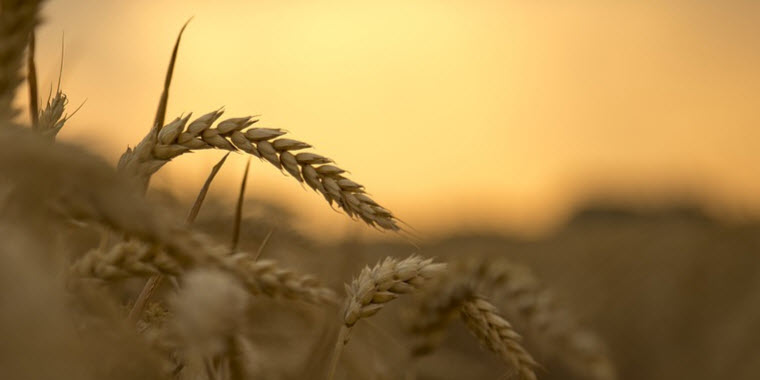The 2020 Prospective Plantings report from USDA seems to reflect 2019 pretty clearly. Extremely tough harvest and planting conditions from last fall are definitely impacting crop acreage allocations in the Northern Plains.
From a national perspective, USDA says that we’ll see a sizeable increase in both corn and soybean acres. That’s not a shock to many farmers given the record amount of prevented planting that happened in 2019.
USDA is estimated corn acreage to increase by 8%, up to 97 million acres. Soybeans they say, will be up 10% to 83.5 million acres. However, we are very likely to see some changes to those numbers given the sharp curtailment in ethanol usage due to COVID-19. The potential for a larger shift in acres from soybeans to corn had not yet figured into the survey from early March.

Wheat
For wheat, total acres are forecast by the agency to be 1%lower coming in at 44.7 million. That represents the lowest wheat planted area since records began in 1919. Nationally, both winter and spring wheat acres are estimated to be down 1%, while durum is forecast 4% lower.
Looking specifically at Northern Ag Network country (Montana, Wyoming, North Dakota and South Dakota), wheat acres are expected lower due to a 9% or 700,000 acre reduction in North Dakota.
When we look at winter wheat plantings, we can really start to see the effect that last falls excessive moisture, both in the form of rain and snow, had on farmers. Producers were unable to get all their winter wheat in the ground and therefore in Montana we’re seeing a 400,000 acre shift from winter to spring wheat. If that rings true, it will represent a 14% increase in spring wheat acres, up to 3.3 million.
Wyoming farmers held winter wheat acres steady year over year, but North and South Dakota farmers seeded 235,000 less acres of wheat last fall. South Dakota farmers shifted those acres to spring wheat but in North Dakota those acres appear to moving to row crops, fallow or something else entirely.
North Dakota farmers will also seed 11% less acres of durum falling to 640,000 acres. North Dakota will still be the top durum producer in the nation, but Montana won’t be far behind with 570,000 acres.
Barley
Farmers across the region and the country are continuing last year’s trend of raising more barley. Nationally, USDA is projecting a 7 percent increase in barley acres with Montana leading the way. With a 10% increase expected, Montana farmers are forecast to plant over 1 million acres of barley. North Dakota will remain the number 2 state for barley production, also expected to be up 10%. Wyoming farmers are also seeding more barley, up 42 percent at 115,000 acres. That ties the Cowboy State with Washington for the number 4 position.
The Montana Wheat and Barley Committee says that barley is a good rotation and has a lower cost of production so farmers may be feeling confident in an open market demand increase. Even though large domestic buyers have been cutting acres, the committee hosted several interested international breweries this past summer, and Montana Craft Malt now in operation could additionally account for the increase.
Oilseeds
Montana farmers are also expected to plant more canola again in 2020. Farmers continue to dip their toes in canola, with a 17% increase expected. That would mean 175,000 acres raised in Montana, enough to put the state at number 2 for canola production. However, that’s far behind number 1, North Dakota at 1.6 million.
A trend that is not expected to continue is planting more flaxseed. Last year farmers in North Dakota, Montana and South Dakota increased flaxseed acres by 80%. However, all are expected to plant less this year, down 28% to just 270,000 acres across all three states.
Despite planting more acres in recent years, Montana doesn’t make USDA’s soybean list just yet. North Dakota farmers are expected to seed a million more acres of soybeans though and South Dakota farmers just shy of 2 million more.
Pulse Crops
When it comes to pulse crops, for which Montana and North Dakota are the number 1 and 1 producers in the nation, acres are expected to fall. Prices have plummeted over the last 3 years, due largely to tariffs implemented by India, the top pulse crop consumer.
Farmers are really getting out of chickpeas with a 32% reduction expected. Montana is expected to fall to 139,000 acres of chickpeas and North Dakota expected to be way down to 17,000.
Dry peas acres are forecast to fall by 12%. North Dakota acres are expected to be down 100,000 and Montana down 35,000. Lentils though are expected to hold fairly steady. Montana farmers are expected to see 20,000 more acres, while North Dakota is estimated down 10,000.
The one thing we can count on, is these numbers will surely change by the time the crops are all in the ground. Farmers are faced with uncertainty at almost every turn with the COVID-19 pandemic, volatile markets and an election coming to boot. The situation changes almost daily, but we’re optimistic for a good crop year.


